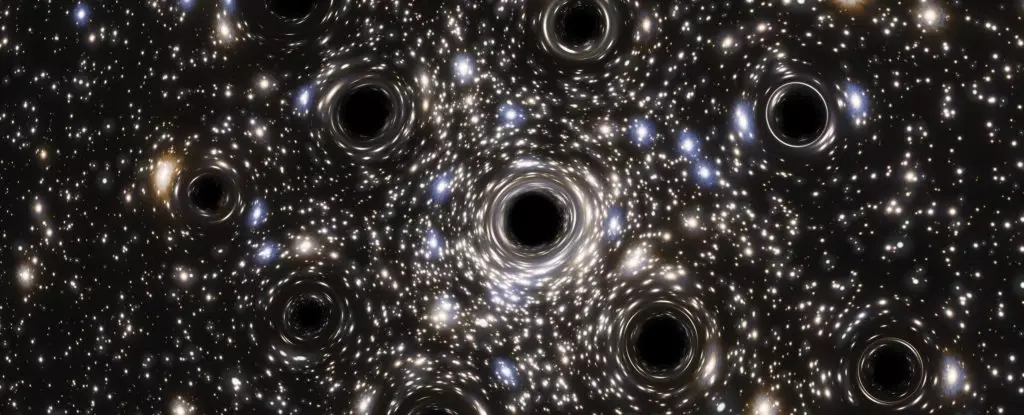In the universe’s grand tapestry, globular clusters hold significant importance, each a time capsule that captures the early epochs of stellar evolution. Among approximately 150 known globular clusters in our Milky Way, Palomar 5 stands out not just for its physical dimensions but for the intriguing revelations it harbors within. These clusters, often perceived as relics of the young universe, are dense, spherical formations comprising tens of thousands, if not millions, of stars, all birthed simultaneously from a primordial cloud of gas. Examples like NGC 6397, nearly as ancient as the universe itself, showcase the characteristics of these celestial fossils, enabling astronomers to delve deep into the historical narratives of galaxies and the elusive specter of dark matter.
The study of globular clusters has traditionally formed the backbone of our understanding of stellar populations, yet in recent years, the focus has shifted towards another fascinating phenomenon: tidal streams. These streams, long and winding roads of stars dispersing across the cosmic panorama, present a new avenue for astronomical inquiry, particularly with the advent of high-precision mapping enabled by the Gaia space observatory. Gaia’s ability to reveal structures previously obscured by distance and light has allowed researchers to uncover these star rivers, challenging existing paradigms regarding their formation and evolution.
Astrophysicist Mark Gieles, from the University of Barcelona, emphasizes the enigmatic nature of these tidal streams. While prior theories suggested that these stellar formations could arise from disrupted star clusters, Palomar 5 serves as a crucial case study due to its unique characteristics. The cluster’s extensive tidal stream, stretching over 20 degrees in the sky, coupled with its stars’ loose distribution, piqued researchers’ interest. In their quest to decode the dynamics of Palomar 5, Gieles and his team resorted to advanced N-body simulations that astutely modeled the orbits and evolutionary trajectories of individual stars in the cluster.
A particularly captivating aspect of their inquiry was the consideration of stellar-mass black holes within Palomar 5. Emerging evidence implies that such black holes might exist in the dense centers of these clusters, where their gravitational interactions could drastically alter the orbits of surrounding stars. This hypothesis took center stage as the simulations revealed that a significant population of black holes—estimated to be about three times greater than initially anticipated—likely contributed to the current structural dynamics of the cluster.
The simulations produced by Gieles’s team indicated that with a black hole population dramatically exceeding expectations, a substantial fraction of the cluster’s mass—over 20 percent—could consist of these enigmatic objects. The black holes, each approximately 20 times the mass of our Sun, originated from supernova explosions, remnants of massive stars that existed during the cluster’s formative years. As these black holes engaged gravitationally with surrounding stars, they effectively facilitated a “slingshot” effect, redirecting stars out into the tidal stream.
This dynamic has profound implications. The results suggest that clusters like Palomar 5 are not isolated phenomena; rather, they could be examples of a common fate shared by many globular clusters throughout the cosmos. In roughly a billion years, simulations predict that Palomar 5 will disintegrate entirely, leaving behind a small congregation of black holes circling the galactic center—an echo of the cluster where once vibrant stars flourished.
Black Holes: Cosmic Collisions and Future Implications
This potential dissolution poses essential questions regarding the gravitational dynamics of black holes in star clusters. As astrophysicist Fabio Antonini from Cardiff University points out, the environment of dense star clusters could be instrumental in the formation of binary black holes. Such configurations could lead to significant cosmic events, including mergers, which remain difficult to observe directly due to the elusive nature of black holes.
The discovery of a high density of black holes within a stellar cluster adds another layer of complexity to our understanding of cosmic evolution. It illustrates that globular clusters are not only prime candidates for the study of the universe’s early history but are also essential to probing the nature and formation pathways of black holes, particularly middleweight black holes that bridge the gap between the lighter stellar-mass black holes and their supermassive counterparts.
The Future of Cosmic Exploration
Palomar 5 represents a unique astronomical laboratory that encapsulates both the history of star formation and the enigmatic life cycle of black holes. As current research continues to unravel the complexities of star streams and their relationship to globular clusters, Palomar 5 stands as a beacon for future investigations, inviting deeper explorations into these cosmic enigmas. The narrative surrounding the cluster reveals that the universe is teeming with secrets waiting to be uncovered—each stellar object, including black holes, bearing tales of cosmic evolution and transformation. Such discoveries reinforce the notion that we are merely scratching the surface of our understanding of the universe’s elaborate dance between light and dark, structure and chaos.


Leave a Reply